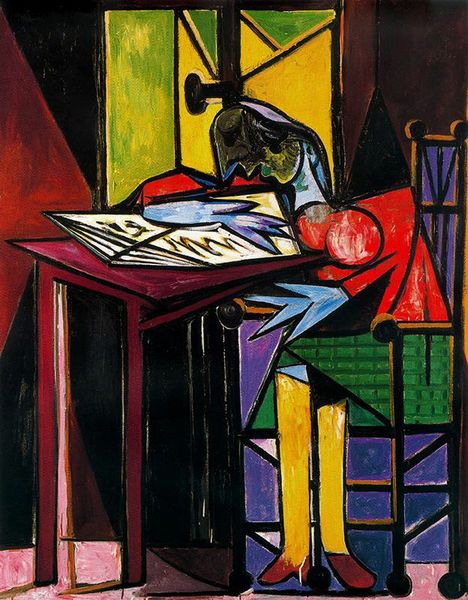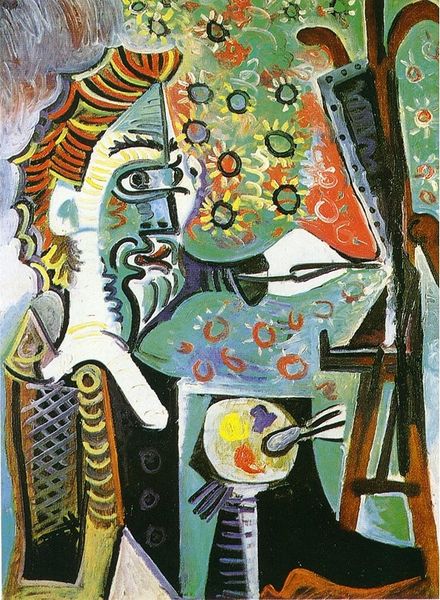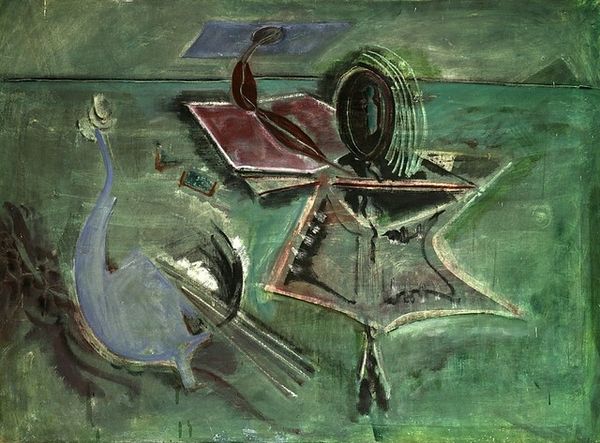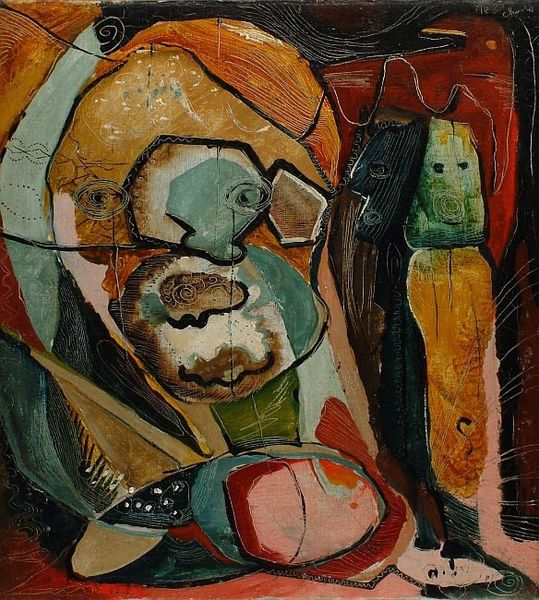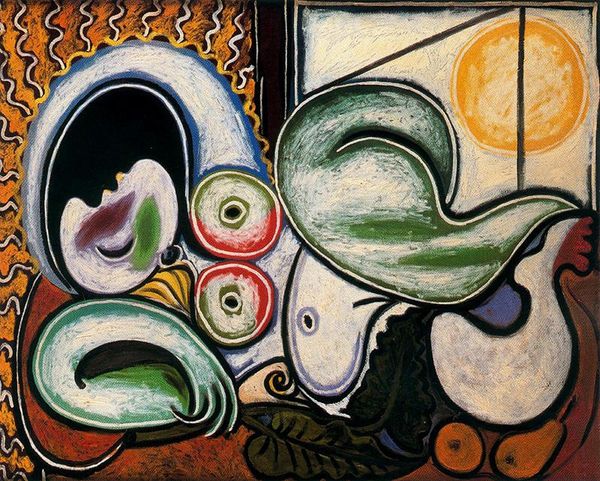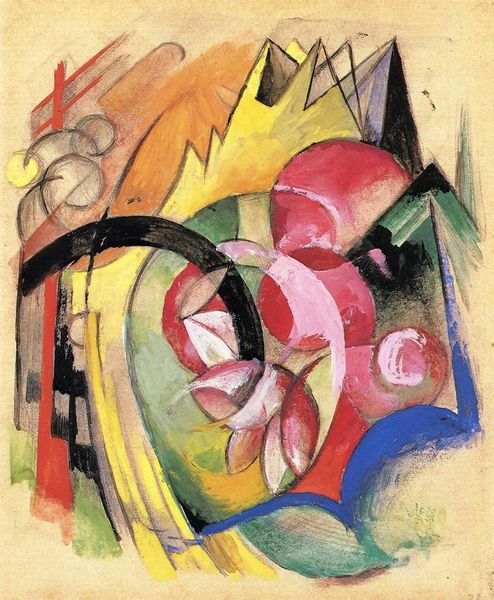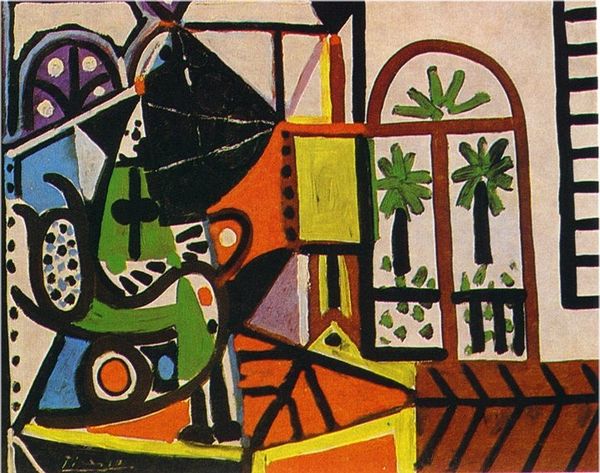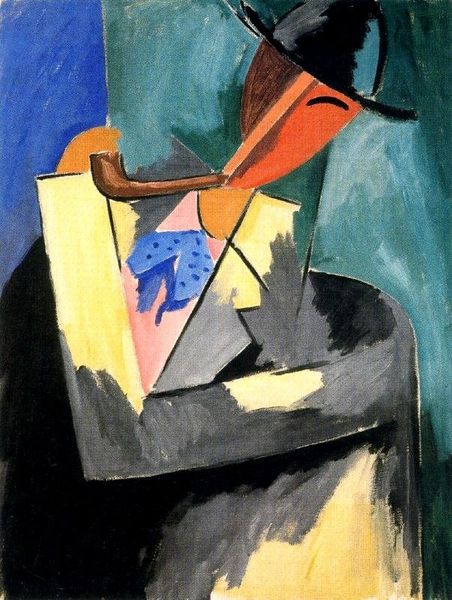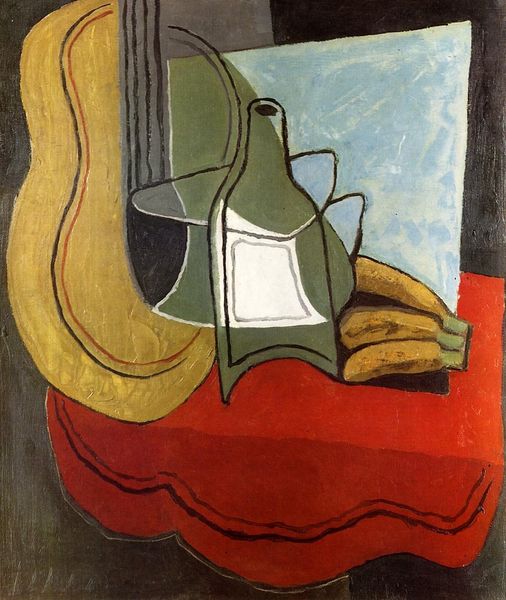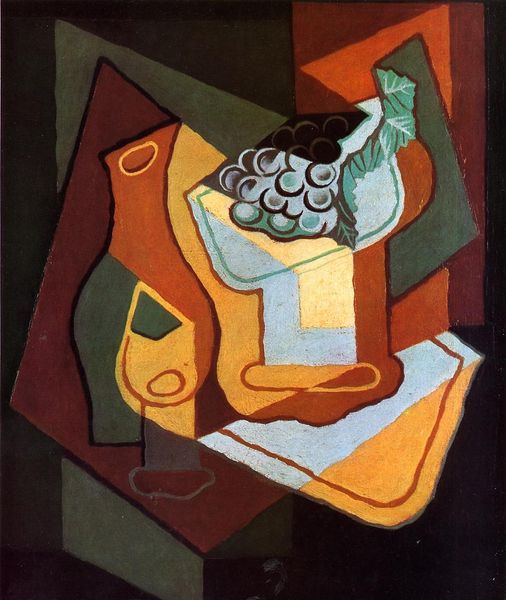
painting
#
cubism
#
abstract painting
#
painting
#
painting art
#
modernism
Dimensions: 33 x 41 cm
Copyright: Pablo Picasso,Fair Use
Curator: Ah, here we have Picasso's "Glass and Pitcher," painted in 1944. It's a still life, of course, currently residing in the Musée Picasso in Paris. What’s your initial impression? Editor: Well, immediately, I feel a sense of quiet intensity. It's a somber, domestic scene rendered with such disjointedness. The colors are muted, and yet the red of that pitcher really grabs your attention. There is definitely an anxious feeling about this composition. Curator: The Second World War was still raging when this was painted. Paris was occupied. How do you think this historical backdrop influences our reading of it? Is there a quiet cry here? Editor: I think so. The fracturing of form so characteristic of Cubism takes on a new weight in this context. It’s not just about seeing multiple perspectives; it feels like the world itself is broken. The domesticity feels like a fragile facade. Also the colors feel heavy. The green almost black. Curator: Yes, the tension is palpable. Picasso's use of light is so interesting. Notice how he plays with the shadows, especially around the pitcher. It almost feels as though it’s emerging from or dissolving into the darkness. The clear glass filled only by a triangle? Why? Editor: That’s exactly it! That singular triangular shape reflecting light into a seemingly empty glass, as if this table is the stage, and these objects have been placed just so, by Picasso, as the great conductor. The single, almost geometric piece of fruit or light just feels pregnant with anticipation... or dread. Is there going to be something else or has everything already been consumed? Curator: Such a fitting question. Considering it was painted at such a turning point in global history! To see such common shapes rendered in a unique style can provide us such depth. Picasso invites us to consider the fragility of existence, to perceive the undercurrents of unease even within the most familiar of settings. What a perspective. Editor: Indeed. I now read this still life less about domesticity and more as a coded message, echoing a broader societal trauma and Picasso’s unique artistic interpretation. Curator: I leave with more questions, and the feeling I have seen something intensely important about our global experience and not just a piece of glass and a simple red pitcher.
Comments
No comments
Be the first to comment and join the conversation on the ultimate creative platform.
